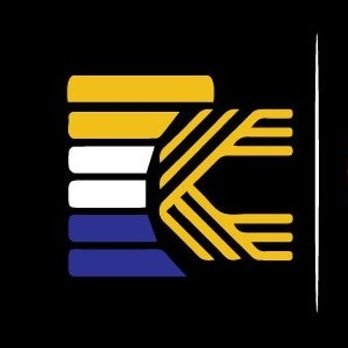


Syncus Kurs SYNC
Wie denken Sie heute über Syncus?
Über Syncus (SYNC)
Was ist Syncus?
Syncus ist ein Treasury-gestütztes DeFi-Protokoll, das eine entscheidende Entwicklung im dezentralen Finanzwesen darstellt. Syncus, das im November 2023 auf den Markt kommt, soll die Vorteile von Zero-Knowledge-Proofs nutzen und mehr Sicherheit, Dezentralisierung und Effizienz bieten. Dieses Protokoll stützt sich auf die Erfahrungen aus der Vergangenheit, insbesondere auf die Herausforderungen, mit denen Protokolle wie OlympusDAO konfrontiert sind. Sie zielt darauf ab, innerhalb der Dynamik der Schatztoken Innovationen zu schaffen, die ein nachhaltiges Wachstum und solide wirtschaftliche Anreize gewährleisten.
Die Vision von Syncus geht über das traditionelle Finanzwesen hinaus und zielt darauf ab, die öffentliche Finanzinfrastruktur durch einen dezentralen Ansatz neu zu gestalten. Durch die Fokussierung auf das Ethereum-Ökosystem und die Nutzung von zkSync für seine Operationen zielt Syncus auf den größten verfügbaren Liquiditätspool in der Kryptowährung ab und beabsichtigt, ungenutzte Assets anzuzapfen und beträchtliche Erträge zu erzielen. Das Engagement des Protokolls für eine sichere, dezentralisierte Zukunft zeigt sich in der strategischen Ausrichtung auf zkSync, die sicherstellt, dass die Nutzer von niedrigen Gebühren und robuster Sicherheit profitieren, ohne Kompromisse bei der Dezentralisierung einzugehen.
Ressourcen
Offizielle Dokumente: https://docs.syncus.fi/
Offizielle Website: https://syncus.fi/
Wie funktioniert Syncus?
Syncus führt ein einzigartiges Wirtschaftsmodell ein, das von den herkömmlichen DeFi-Protokollen abweicht, indem es sich mit den Problemen des Schatzwachstums und der Token-Stabilität befasst. Syncus hat aus den Fehlern und Grenzen früherer Systeme gelernt und einen Mechanismus entwickelt, der ein nachhaltiges und skalierbares wirtschaftliches Umfeld fördert. Dazu gehört eine strategische Mischung aus Protokollsteuern und Finanzverwaltung, bei der jede Transaktion zum finanziellen Wohlergehen des Protokolls beiträgt und so einen stabilen und wachsenden Ertrag für die Beteiligten gewährleistet.
Das Protokoll funktioniert nach einem Prinzip, bei dem die Nachfrage nach seinem nativen Token, SYNC, in erster Linie durch seine attraktiven APY-Angebote angetrieben wird. Diese Nachfrage fördert das Wachstum des Schatzes, was wiederum den effektiven Jahreszins stützt und einen positiven Kreislauf schafft, von dem alle Beteiligten profitieren. Im Gegensatz zu Modellen, die sich stark auf Anleihen oder andere verwässernde Praktiken stützen, konzentriert sich Syncus auf die Schaffung von echtem Wert durch ein sich selbst verstärkendes Wirtschaftsmodell, das anpassungsfähige Steuerstrategien umfasst, um dynamisch auf die Marktbedingungen zu reagieren und so langfristige Rentabilität und Widerstandsfähigkeit zu gewährleisten.
Was ist SYNC Token?
SYNC ist der wichtigste Token des Syncus-Protokolls. Er hat mehrere Funktionen: Er dient als Einsatzinstrument, als Tauschmittel und als Ausdruck der Beteiligung an der Verwaltung und der künftigen Ausrichtung des Protokolls. In das Design von SYNC sind die Erfahrungen aus früheren DeFi-Programmen eingeflossen, und es wurden innovative Funktionen eingeführt, die das langfristige Halten und die aktive Beteiligung am Wachstum des Ökosystems fördern. Das Gesamtangebot an SYNC beträgt 4.186.731.698 Token.
Das Staking von SYNC bietet Nutzern einen direkten Anteil am Erfolg des Protokolls, wodurch die Anreize zwischen dem Protokoll und seinen Teilnehmern angeglichen werden. Die von Syncus angewandte adaptive Steuerstrategie stellt sicher, dass spekulative Handlungen verhindert werden, und fördert so eine Community engagierter Akteure. Im Laufe der Zeit soll der SYNC-Token zu einem Maßstab für nachhaltige Wirtschaftsmodelle in DeFi werden und durch sein durchdachtes Design und seine strategische Implementierung innerhalb des Syncus-Protokolls Stabilität, Wachstum und Nutzerengagement fördern.
Was bestimmt den Preis von Syncus?
Der Preis von Syncus wird, wie der anderer Blockchain-basierter Vermögenswerte, von einem komplexen Zusammenspiel von Faktoren beeinflusst, die für die Dynamik des Kryptowährungsmarktes von zentraler Bedeutung sind. Im Kern spielt die Dynamik von Angebot und Nachfrage innerhalb des Web3-Ökosystems eine entscheidende Rolle, wobei die Schwankungen oft von den neuesten Nachrichten und Entwicklungen im Bereich der Kryptowährungen bestimmt werden. Investoren und Enthusiasten analysieren die Syncus-Trends anhand von Kryptowährungs-Charts und -Analysen, um zukünftige Bewegungen vorherzusagen und die besten Krypto-Investitionen für 2024 und darüber hinaus zu identifizieren.
Darüber hinaus beeinflussen die Akzeptanz von Kryptowährungen, regulatorische Änderungen und die Marktvolatilität die Bewertung von Syncus erheblich. Sicherheitsbedenken und die neuesten Entwicklungen in der Blockchain-Technologie tragen ebenfalls zu ihrer Marktwahrnehmung bei und beeinflussen das Vertrauen der Anleger und das spekulative Interesse. Da sich die Kryptowährungslandschaft weiterentwickelt, werden Faktoren wie technologische Fortschritte, die globale Regulierung von Kryptowährungen und die allgemeine Stimmung gegenüber Kryptowährungsrisiken weiterhin die Preisprognosen von Syncus beeinflussen, was sie zu einem Thema von großem Interesse für diejenigen macht, die sich mit den Chancen und Herausforderungen von Investitionen in den Markt für digitale Assets befassen.
Wer sich für die Investition oder das Trading mit Synapse interessiert, wird sich vielleicht fragen: Wo kann man SYNC kaufen? Sie können SYNC an führenden Börsen wie Bitget kaufen, die eine sichere und nutzerfreundliche Plattform für Krypto-Fans bieten.
Ähnliche Artikel über Syncus:
Syncus (SYNC): Konventionelle Finanzstrukturen in Frage stellen
AI-Analysebericht über Syncus
V1: Syncus Preis heute in EUR
Syncus Preisverlauf (EUR)
 Niedrigster Preis
Niedrigster Preis Höchster Preis
Höchster Preis 
Was ist der höchste Preis von Syncus?
Was ist der niedrigste Preis von Syncus?
Syncus Preisprognose
Wann ist ein guter Zeitpunkt, um SYNC zu kaufen? Sollte ich SYNC jetzt kaufen oder verkaufen?
Wie hoch wird der Preis von SYNC in 2026 sein?
Wie hoch wird der Preis von SYNC in 2031 sein?
FAQ
Wie hoch ist der aktuelle Preis von Syncus?
Wie hoch ist das 24-Stunden-Trading-Volumen von Syncus?
Was ist das Allzeithoch von Syncus?
Kann ich Syncus auf Bitget kaufen?
Kann ich mit Investitionen in Syncus ein regelmäßiges Einkommen erzielen?
Wo kann ich Syncus mit der niedrigsten Gebühr kaufen?
Syncus Bestände nach Konzentration
Syncus Adressen nach Haltezeit

Globale Syncus Preise
- 1
- 2
- 3
- 4
- 5
Neue Listings auf Bitget
Mehr kaufen
Wo kann ich Krypto kaufen?
Videobereich - schnelle Verifizierung, schnelles Trading

Syncus Bewertungen
Bitget Insights




Verwandte Assets
Zusätzliche Informationen über Syncus
Coin-Übersicht
Coin bezogen
Trading bezogen
























.png)








